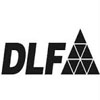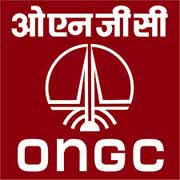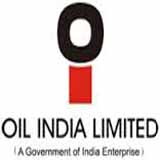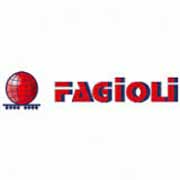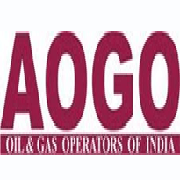-
India – Opportunities For India In Current Downtrend Of Oil Prices.
Through this short post, we seek to examine the current downtrend in oil prices, and what it means from an Indian context. As in any downtrend, the intent ought to be to maximise opportunities and isolate effects of any threats and the author accordingly seeks to analyse how these threats may be turned into opportunities. This short piece further examines how, despite the usual market rhetoric, India could position itself to take advantage of the current downturn.
Global Response
In the wake of the downtrend, the immediate response of global exploration and production (E&P) companies was to hold off large capital investments in new projects and capital-intensive exploration activities. These decisions now stand vindicated as barrel prices have hovered around the US$45-50 mark. Several of the big companies made retrenchments and streamlined costs across the supply chain.
Nevertheless, a fundamental observation emerging from the downtrend is that its effects are not uniform on players in the industry. Companies that diversified and integrated their base across upstream, midstream and downstream assets are in a far better position to manage the downtrend and, in some cases, even benefit from it. Companies that were dependent on the crude price for their bottom lines have been severely challenged to weather this crisis. Some also face severe devaluation or even bankruptcy, thereby creating an asset base for acquisition by companies with financial agility and capital strength.
Efficient Production versus Aggressive Exploration
The focus globally is maximum production with minimum costs. Service providers and suppliers are scrounging for live orders, creating a buyers’ market. In India, Government owned enterprises (PSUs) have been strategically mandated to invest in capex. The Oil and Natural Gas Corporation of India (ONGC) is rolling out mega re-development projects off the ageing western offshore fields, as well as the ambitious integrated development plans for eastern offshore deepwater fields. Implementing these high-value projects within the limited window is critical.
Overseas Asset Acquisition
The past year has seen some big ticket acquisitions such as the Royal Dutch Shell acquisition of BG Energy in the upstream sector, and Halliburton’s announcement of the acquisition of Baker Hughes in the midstream sector, which did not go through. M&A in oil & gas globally has been relatively quiet owing to disagreements on valuation due to price volatility, amongst other factors. Big players who could sustain low prices for a year and half will now start feeling the strain in the first quarter of the new fiscal year when last year’s numbers come in. This could create fresh opportunities. From India’s perspective, the latest acquisition of Vadinar Refinery, and connected assets by Rosneft alongwith Private Equity (PE) Investors is a notable development. It would be interesting to observe whether this gives rise to heightened PE Investor confidence in Indian oil and gas space.
Technology – the Game Changer
The big story is how North American shale and tight oil was like a matador to the bullish Gulf crude. Sustained and structured investments in technology for producing “tough oil” propelled US and Canadian E&P Companies to challenge the volumes and market share of Gulf crude. India can gain from these lessons, and rather invest in advanced technology for its deepwater and unconventional reserves (i.e. Coal Bed Methane, Gas Hydrates) to improve exploration efforts and production efficiencies resulting in lowering costs, and increased production.
Downstream Scenario in India
Oil marketing PSUs gained from lower import payouts, but absorbed inventory losses due to reduced refining margins and forex fluctuations. However, private refiners like Reliance bucked the trend by operating on a flexible input system of spot cargoes to offset any downside of long-term high-priced supply contracts. Rosneft’s investment in the downstream sector is expected to have some play on the market dynamics in this space.
Upstream scenario in India
New initiatives, such as the Hydrocarbon Exploration Licensing Policy (HELP), announced in March 2016, and the launch of the Discovered Small Fields Bidding Round (DSFBR) on May 25, 2016, are encouraging signs. The Ministry of Petroleum and Natural gas (MoPNG) is aggressively promoting the DSFBR through roadshows in India and abroad to attract global E&P players. The MoPNG has also announced that more blocks will be auctioned under HELP next year.
Solutions – Immediate Actionables for India
Refurbishing ageing infrastructure
Western Offshore and other onshore fields are operating on platforms and equipment nearing commercial expiry. ONGC is currently the only serious global E&P player that has announced its intentions of going ahead with capex outlay regardless of the downturn. This could be an opportunity to revamp ageing equipment at lower costs.
Overseas Acquisitions
Devalued Assets v. Distressed Assets
Otherwise healthy assets have been devalued purely on account of the low prices, whereas some assets are on the verge of becoming liabilities. Investors who can tell the difference stand to gain the most from this scenario.
Probable Investment Destinations – “Energy Diplomacy”
North American oil companies would be a natural choice. However, these may hold on to their prospected reserves till prices rise, and produce existing reserves on minimum margins while consolidating bottom lines. Therefore, actual valuation may not be as low as estimated.
Recent MoPNG press and media briefings show an intent to engage in “energy diplomacy” so as to secure India’s hydrocarbon interests. This was evident in the recent Vankor acquisitions by OVL and IOCL from Russian E&P giant Rosneft. The MoPNG in the recent past has questioned the so-called “Asian Premium” and mooted a gas importers’ bloc for effective articulation of demand. These are steps in the right direction.
India’s growing traction can be leveraged to negotiate favourable deals in South America, Africa, Myanmar, Vietnam, etc, which may be more amenable to diplomatic interventions as opposed to North America or Europe. Assets in politically sensitive countries like Venezuela, Nigeria, Vietnam and Myanmar need to be closely monitored for political risk assessment before actual investment. The Chinese onslaught in the APAC, and the South China Sea region is the dimension that has led many countries to align their diplomatic and geopolitical interests. Japan has also earmarked significant funds for overseas acquisitions.
Diversifying Asset base
Stressed oilfield services companies may be available for acquisition at a competitive valuation. Such acquisitions can cushion the risks of purely E&P investments while providing a tactical advantage in the integrated E&P industry. Synergies of overseas sourcing, processing and transportation assets are immense for a bullish price market.
Health of Oil PSUs
The health of Oil PSUs like ONGC and OIL is critical to find more domestic reserves and also accrete additional reserves to already proved reserves. The following steps may enable Oil PSUs to compete better in the global arena.
Review of Contracts
Maximum PSU payout is on high-value service / supply contracts. Due to tendering procedure, these contracts are fixed for three to five years. Contracts entered into two to three years ago in a higher price market scenario may be reviewed for possible renegotiation.
Domestic Exploration v. Domestic Production
ONGC and OIL have to increase both domestic production and domestic reserves. The Government has tried to offload this dual burden by bringing out DSFBR. Allotment of the DSF must be expedited within the next fiscal year to allow E&P players to gain full advantage of cheap oilfield services. This would increase domestic production and reduce imports.
Review of Disputes
Due to Ministry of Law and Justice directives, several inter-PSU disputes may be pending with respective Ministries, which may be reviewed for fast resolution. This can release resources and reduce contingent liabilities.
Parting Shot
Experts, after Brexit, are increasingly talking about weaker oil demand and hence, oil prices may remain depressed for a long period. A weaker British Pound and Euro makes the Dollar costlier. Historically, a stronger Dollar has led to depressed crude oil prices. Hence, the current bearish trend is likely to continue, and this means a prolonged window of opportunity for India to make strategic investments in assets and technology.
Share This
Isaiah Crowell Womens Jersey





































